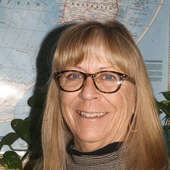- Research tips and McCook Brick Company- solid as a brick (12/16/24)
- Big Give appreciation and some railroad characters (11/15/24)
- George Randel becomes a landowner, gets married, and takes in a Buffalo Bill show (9/20/24)
- The memoirs of George F. Randel, early settler of Red Willow County (9/12/24)
- Vietnam War Memorial honors Nebraskans who served (6/13/24)
- McCook business promotions - just prior to 1893 stock market crash (5/30/24)
- Shall we dance? Meet you at the Gayway (12/8/23)
Opinion
Elmer Kay interview - part two
Friday, October 6, 2023
Any typos in the last article can be attributed to my attempt to chop the end of my finger off while slicing an onion. Other than that, my canning enterprise is going fairly well. Chili sauce, diced tomatoes, peach preserves, pasta sauce, and those candied apples are in the jars. I ended up with an unknown pepper plant, actually two, and when I sliced some up to make a fresh salsa, upon sampling a bite determined that NO ONE I know is going to eat those peppers fresh. So, since it is the most prolific (of course) pepper plant I have in my garden, I pickled a quart for a test. Not sure who is going to test them, certain it’s not going to be me.
Continuing my coverage of Lucile Wootan’s interview with Elmer Kay for a school assignment in 1938: “A very interesting description of what McCook first looked like- the main part of town was what is now West B Street. The Congress being about in the center the buildings were mostly frame and have burnt down since. The residential section was in what we now call west McCook. But the Lincoln Land Company owned several lots along what is now Main. Competition changed the main part of McCook to where it is now. The first water supply was taken from an old wooden supply tank in what is now our city park, it was in the country then. Most of the trees weren’t taller than an average man and weeds and bunch grass grew in plenty. It was not thought of then as a city park. Several saloons were on what was then main street - the cowboy really had some good times, shooting and gambling until the break of dawn then going on horseback to their ranches to round up to cattle. One time especially about three or four thousand head of cattle were stampeded and ran right down through the main part of what is now town and run over the bank of the Republican river all being killed. They certainly made a nice pile, all piled up there together however, these cattle that they raised then weren’t thoroughbreds or fed like the ones we raise today.”
“Another interesting event was in 1885 when Lottest was mayor. The block called Union Block, about where Dunbar & Osborn’s are now, got afire, the fire equipment was very poor and fires were very common. In this particular store a great deal of gun powder was stored. This all got afire and really made a fourth of July celebration.” (For those unfamiliar with Union Block or Dunbar & Osborn, this fire was on the corner of East B and Norris Ave, and the building was rebuilt housing the shoe store, Paul’s Drug (later A & M Drug) Kansas Nebraska Gas Co., today’s Art Guild. In the 1960’s that area again burnt completely destroying the first two buildings and taking the top floor of A & M Drug, which was never replaced.)
“Prairie fires were very common then also, the people were very much afraid of these but of course they only burned to the banks of the river. In those days the river was very different from what it is today. There were no islands or trees the fires kept the trees down, and it is thought that the coming of the Russian thistles (blowing around and getting lodged carrying sand with them) caused the islands, then the cottonwood and other seeds were blown about.”
One final note: “The way the hunters caught the antelope was by digging a hole or hiding and putting a piece of red cloth on a stick-the antelope were very curious, so they would come close to the stick, then the hunter could shoot them.”
Interesting isn’t it that Russian thistles were attributed to changing the landscape of the river? Or the fact that buffalo and antelope were the main source of game meat then? Seeing a deer was a rare event in any of the histories I’ve read. Of course the landscape of the Republican River Valley has changed drastically even since I was a child. It has gone from a wide free-flowing river year round that my dad used to “noodle” cat fish out of to a narrow, dry bed in places during the summer.

